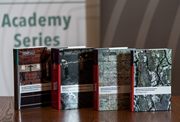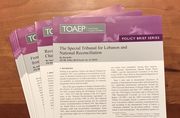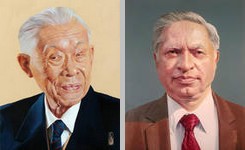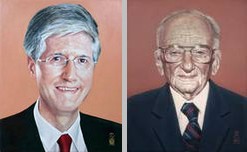Table of contents:
P.36. Evidence inferred from an utterance, a document or a deed.
P.36.1. Evidence inferred from claiming subjects were volunteers.
P.36.2. Evidence inferred from the existence of an order to the effect of carrying out experiments.
P.37. Evidence inferred from a circumstance.
P.37.2. Evidence of creating or maintaining a camp for the purpose of experimentation.
Element:
P.36. Evidence inferred from an utterance, a document or a deed.
P.36.1. Evidence inferred from claiming subjects were volunteers.
A. Legal source/authority and evidence:
Trial of Erhard Milch, Law Reports of Trials of War Criminals, Selected and prepared by the United Nations War Crimes Commission, Vol. VII, p. 33:
It was also claimed by Milch that the only persons who were used in these experiments were habitual criminals who had been sentenced to death and who were given the opportunity of offering themselves for the use in the experiments and receiving a reward, if they survived, a commutation of the death sentence to life imprisonment.
[B. Evidentiary comment:]
P.36.2. Evidence inferred from the existence of an order to the effect of carrying out experiments.
A. Legal source/authority and evidence:
Trial of Öbersturmbannführer Rudolf Franz Ferdinand Hoess, Case No. 38, Judgement (Supreme National Tribunal of Poland), 11-29 March 1947, reported in United Nations War Crimes Commission, Law Reports of Trials of War Criminals, Vol 8 (1948), p. 14:
The evidence submitted by Professor Kowalski and other witnesses sowed that numerous medical experiments were performed on men and women of non-German origin, mostly Jews, at the Auschwitz concentration camp. They were carried out on orders from the supreme German authorities.
[B. Evidentiary comment:]
P.37. Evidence inferred from a circumstance.
A. Legal source/authority and evidence:
United States of America v. Karl Brandt et al., Case No. 5, Judgement (Military Tribunal No. I), 20 August 1947, reproduced in Trials of War Criminals before the Nuernberg Military Tribunals under Control Council Law No. 10, Proceedings, Vol. 2 (1949-53), p. 277-278:
Among 10 millions of Jews in Europe, there are, I figure, at least 2-3 millions of men and women who are fit enough to work. Considering the extraordinary difficulties the labour problem presents us with I hold the view that those 2-3 millions should be specially selected and preserved. This can however only be done if at the same time they are rendered incapable to propagate. About a year ago I reported to you that agents of mine have completed the experiments necessary for this purpose. I would like to recall these facts once more. Sterilization, as normally performed on persons with hereditary diseases is here out of the question because it takes too long and is too expensive. Castration by X-ray is however not only relatively cheap, but can also be performed in many thousands on the shortest time. I think at this time that it is already irrelevant whether the people in question become aware of having been castrated after some weeks or months, once they feel the effects.
[B. Evidentiary comment:]
P.37.2. Evidence of creating or maintaining a camp for the purpose of experimentation.
A. Legal source/authority and evidence:
Trial of Öbersturmbannführer Rudolf Franz Ferdinand Hoess, Case No. 38, Judgement (Supreme National Tribunal of Poland), 11-29 March 1947, reported in United Nations War Crimes Commission, Law Reports of Trials of War Criminals, Vol 8 (1948), p. 16:
Four hundred men and 250 women were thus put into the same place and results of natural insemination were observed, while in other cases artificial insemination experiments were performed. Another camp for 3,500 of such human guinea pigs was also built.
[B. Evidentiary comment:]







